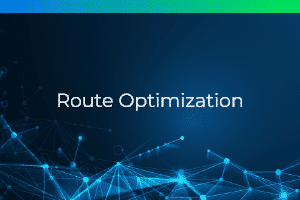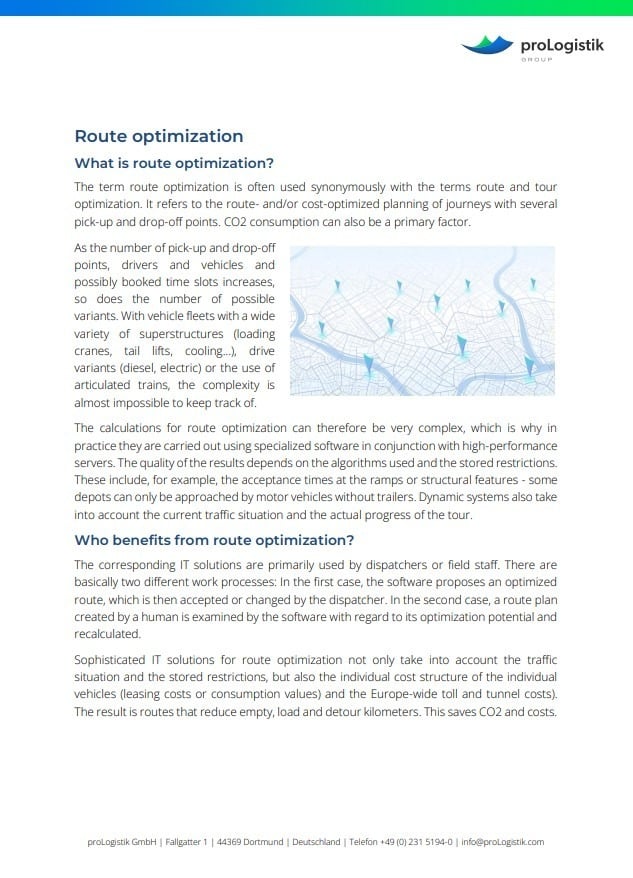What is route optimization?
The term route optimization is often used synonymously with the term tour optimization. It refers to the route and/or cost-optimized planning of journeys with several pick-up and drop-off points. CO2 consumption can also be a primary factor.
As the number of pick-up and drop-off points, drivers and vehicles and possibly booked time slots increases, so does the number of possible variants. With vehicle fleets with a wide variety of superstructures (loading cranes, tail lifts, cooling…), drive variants (diesel, electric) or the use of articulated trains, the complexity is almost impossible to keep track of.
The calculations for route optimization can therefore be very complex, which is why in practice they are carried out using specialized software in conjunction with high-performance servers. The quality of the results depends on the algorithms used and the stored restrictions. These include, for example, the acceptance times at the ramps or structural features – some depots can only be approached by motor vehicles without trailers. Dynamic systems also take into account the current traffic situation and the actual progress of the tour.
Who benefits from route optimization?
The corresponding IT solutions are primarily used by dispatchers or field staff. There are basically two different work processes: In the first case, the software proposes an optimized route, which is then accepted or changed by the dispatcher. In the second case, a route plan created by a human is examined by the software with regard to its optimization potential and recalculated.
Sophisticated IT solutions for route optimization not only take into account the traffic situation and the stored restrictions, but also the individual cost structure of the individual vehicles (leasing costs or consumption values) and the Europe-wide toll and tunnel costs). The result is routes that reduce empty, load and detour kilometers. This saves CO2 and costs.
These criteria should be taken into account when optimizing routes:
- Distance between the points of contact
- Possible delivery times
- Booked time slots
- Consumption values and toll classes of the individual vehicles
- Superstructures (loading cranes, tail lifts, cooling devices…)
- Driver qualifications (dangerous goods license)
- Vehicle configuration (articulated truck, semi-trailer, motor vehicle, transporter)
- Current traffic situation
- Current tour progress

